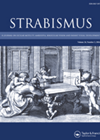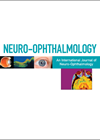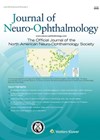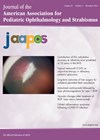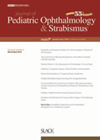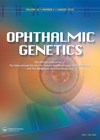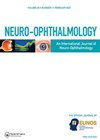
Journal Reviews archive for 2024
Randomised controlled trial for large-angle exotropia surgery
The purpose of this study was to investigate single eye, single setting surgical options to correct 80–90PD of exotropia with two options of muscle transplant and suture hang-back recession. There was retention of anatomical limits of 6mm resection for medial...
Clinical predictors of proliferative sickle cell retinopathy
Sickle Cell Disease (SCD) is an inherited disorder resulting in production of Haemoglobin S (HbS), which aggregates in conditions of hypoxia, acidosis or hyperosmolarity. This leads to vascular stasis, thrombosis and ischaemia. The authors present a cross-sectional study (45 consecutive...
Relationship between diabetic retinopathy and cerebrovascular reactivity changes
Cerebral micro-angiopathy caused by diabetes can manifest itself as an impairment in cerebrovascular reactivity. Transcranial doppler ultrasound (TCD) is a cost-effective and non-invasive way to measure the cerebrovascular reactivity. This study aimed to assess the relationship between the grade of...
Comparison of thrombolysis and conservative management in acute retinal ischaemia
The authors present a retrospective cohort study of individuals presenting with acute, painless, monocular vision loss and diagnosed with acute retinal ischaemia. Reasons for exclusion were iatrogenic aetiology, transient vision loss, missing initial visual acuity data, more than 16 hours...
A review of patient education interventions within paediatric ophthalmology
This systematic review aimed to review published literature around the content, effectiveness and outcomes related to interventions educating patients within paediatric ophthalmology. A single database was searched from inception to June 2022. Interventions aimed at either the patient or carers...
Monocular eye closure following treatment of intermittent exotropia
The purpose of this study was to evaluate the short- and long-term status of monocular eye closure after surgical treatment of intermittent exotropia and to determine whether the status at short-term postoperative follow-up duration remains or can change after long-term...
Use of control scores for intermittent exotropia
This study surveyed paediatric ophthalmologists to determine their use of the Newcastle, PEDIG and LACTOSE control scores in the diagnosis and management of intermittent exotropia. The authors aimed to identify how frequently control scores are used clinically, the barriers to...
Combined in-office and home-based eccentric viewing training for central vision loss
This retrospective study aimed to investigate the effectiveness of an eccentric viewing training (EVT) programme delivered in a real-world setting (home exercises) by combining a traditional EVT technique with biofeedback training using microperimetry. The authors investigated potential relationships between visual...
Dichoptic vs occlusion therapy outcomes for anisometropic amblyopia
The authors evaluated a binocular Tetris game for Android phones and compared its effectiveness, compliance and adverse events with part-time patching in children with anisometropic amblyopia. This was a prospective randomised study. Group 1 played the game for two hours...
PRPF31-related retinitis pigmentosa and asymptomatic carriers
The authors present a study of 21 patients with variants in the PRPF31 gene classified as pathogenic or likely pathogenic. These variants are caused by autosomal dominant retinitis pigmentosa (RP-11). Between January 2020 and November 2021 patients underwent tests of...
Inverted internal limiting membrane flap vs internal limiting membrane insertion technique for large macular holes
This meta-analysis aimed to compare and evaluate the morphological and functional outcomes between the inverted internal limiting membrane (ILM) flap and ILM insertion techniques in the treatment of large macular holes (MHs). The primary outcome measures were defined by the...
Do occult neuroretinitis and non-arteritic anterior ischaemic optic neuropathy differ in presentation?
This study evaluates differences between neuroretinitis and non-arteritic anterior ischaemic optic neuropathy (NAAION) in terms of patient demographics, clinical presentation, and optical coherence tomography (OCT) findings. Medical records of patients with a final diagnosis of occult neuroretinitis or NAAION were...

